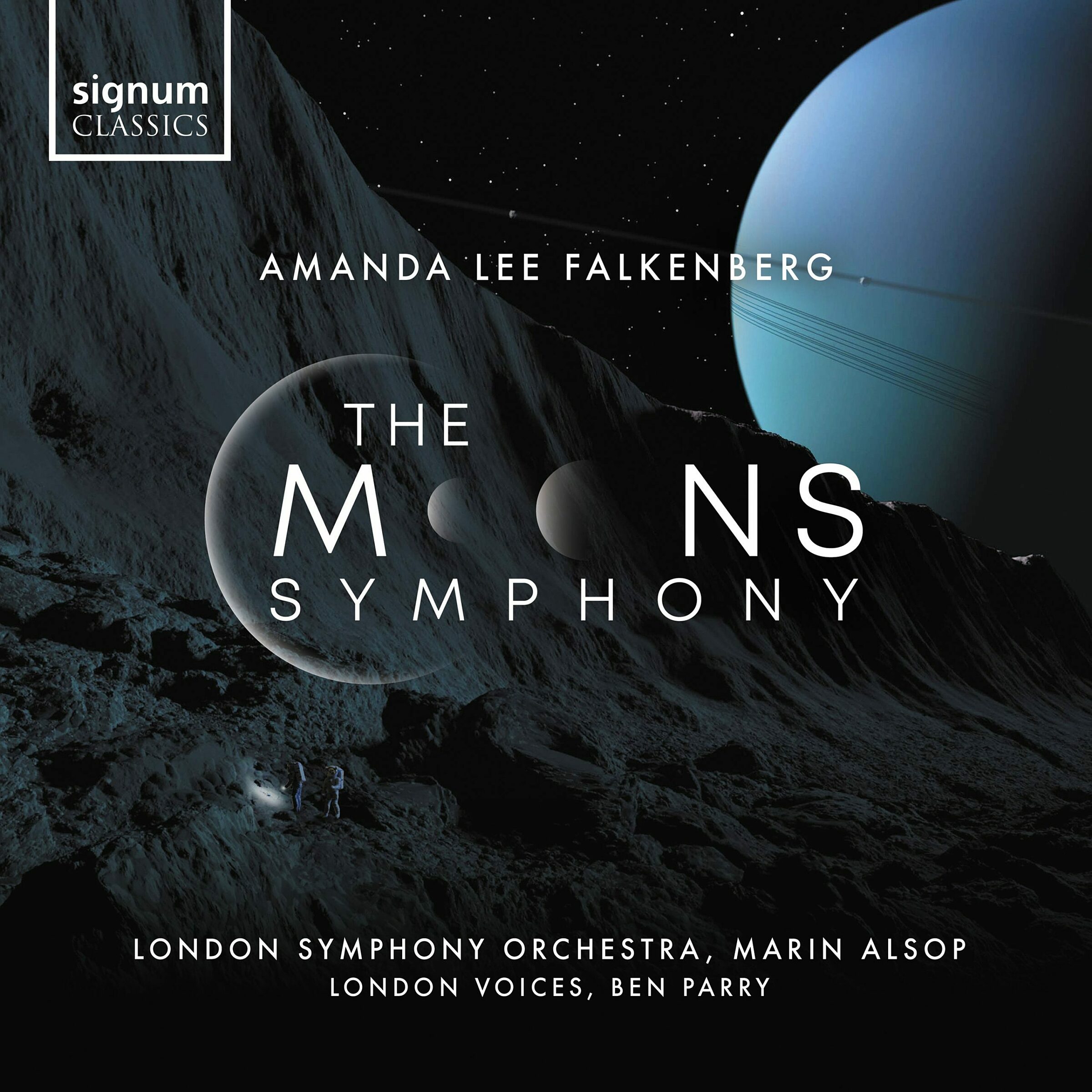Planetary Radio • Aug 14, 2024
An Earthling’s guide to the "Moons Symphony"
On This Episode
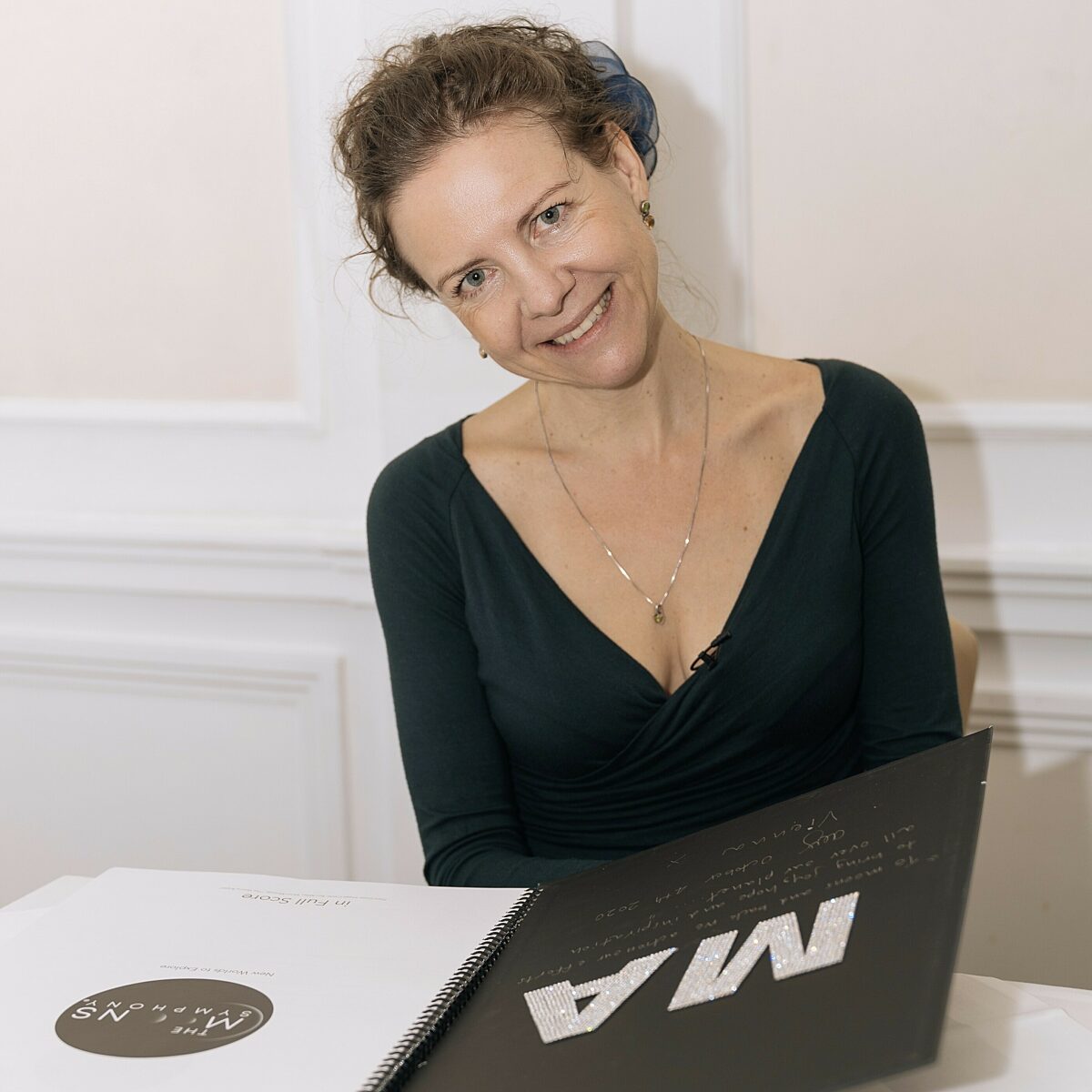
Amanda Lee Falkenberg
Composer of The Moons Symphony
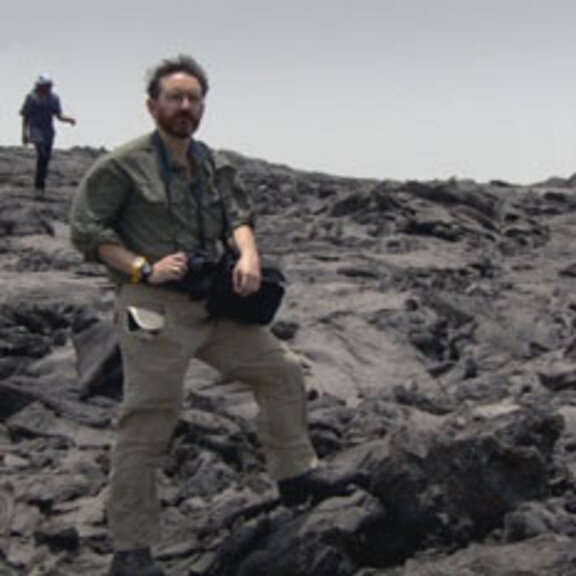
Ashley Davies
Volcanologist and member of the Europa Clipper science team for Jet Propulsion Laboratory
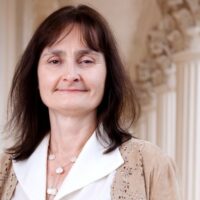
Michele Dougherty
Principal Investigator for the magnetometer on the European Space Agency’s JUICE mission for Imperial College London

Tom Spilker
Vice President of Engineering for Above: Space Development Corporation
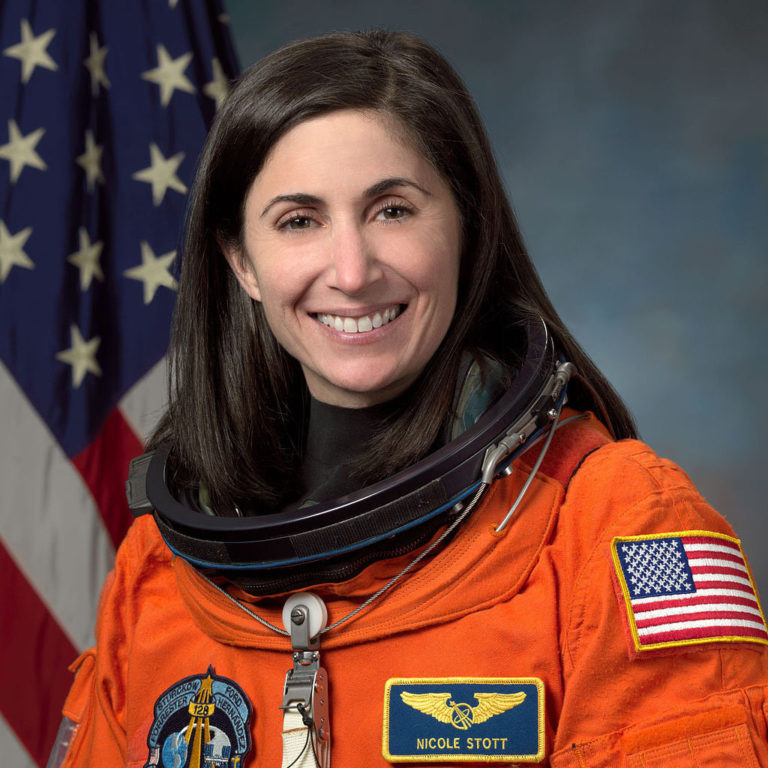
Nicole Stott
Astronaut, aquanaut, and artist
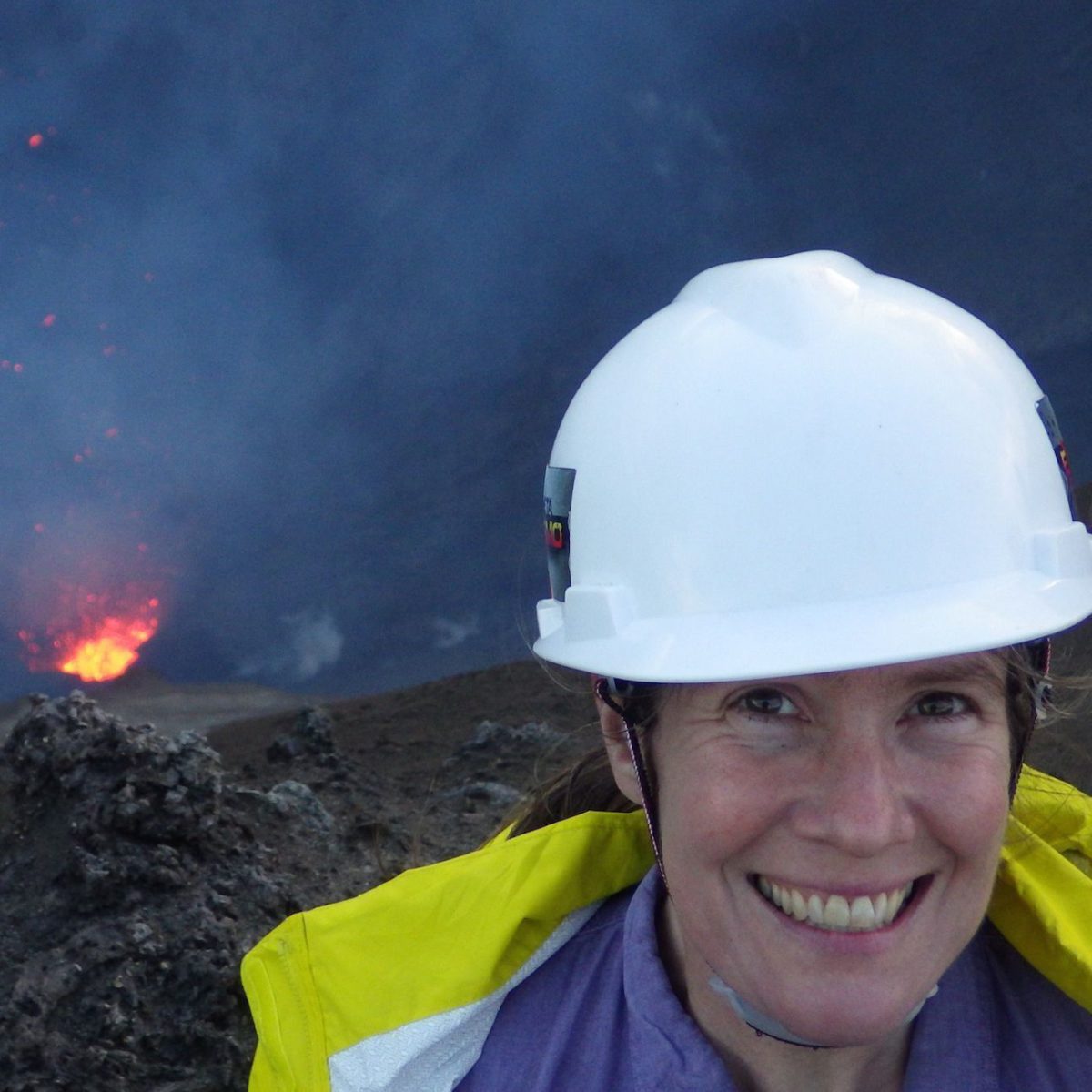
Elizabeth "Zibi" Turtle
Planetary Scientist at Johns Hopkins Applied Physics Lab and Dragonfly Principal Investigator

Mat Kaplan
Senior Communications Adviser and former Host of Planetary Radio for The Planetary Society
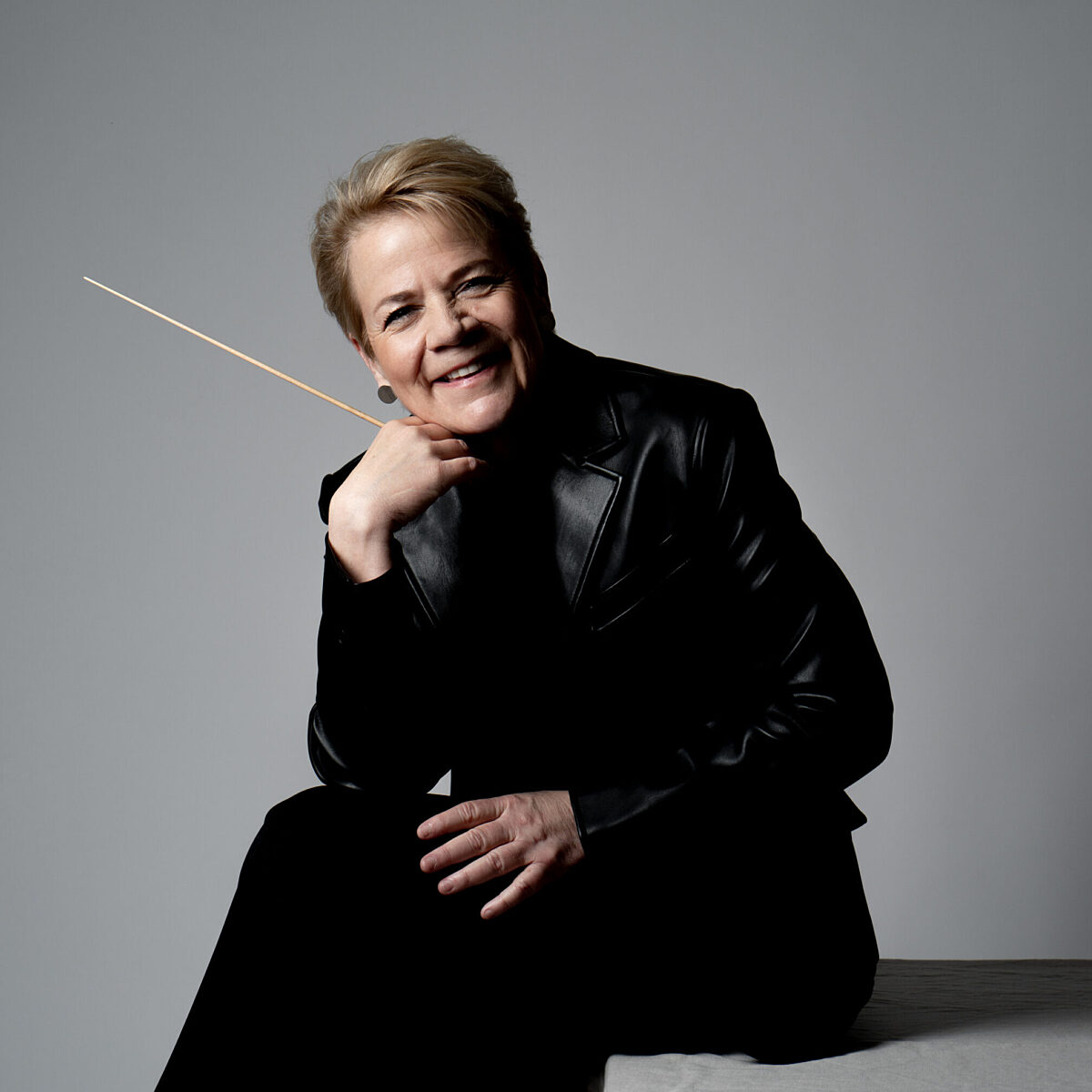
Marin Alsop
Conductor

Bruce Betts
Chief Scientist / LightSail Program Manager for The Planetary Society

Sarah Al-Ahmed
Planetary Radio Host and Producer for The Planetary Society
Planetary Radio takes a melodic adventure to the Ravinia Festival in Illinois, USA, for the public premiere of the "Moons Symphony." Mat Kaplan, senior communications advisor at The Planetary Society, speaks with a panel of amazing guests, including members of the Europa Clipper, Dragonfly, and Cassini teams, about the discoveries that inspired the music. Then, Bruce Betts, our chief scientist, marks the end of the 2024 Summer Olympics with a random space fact in What's Up.
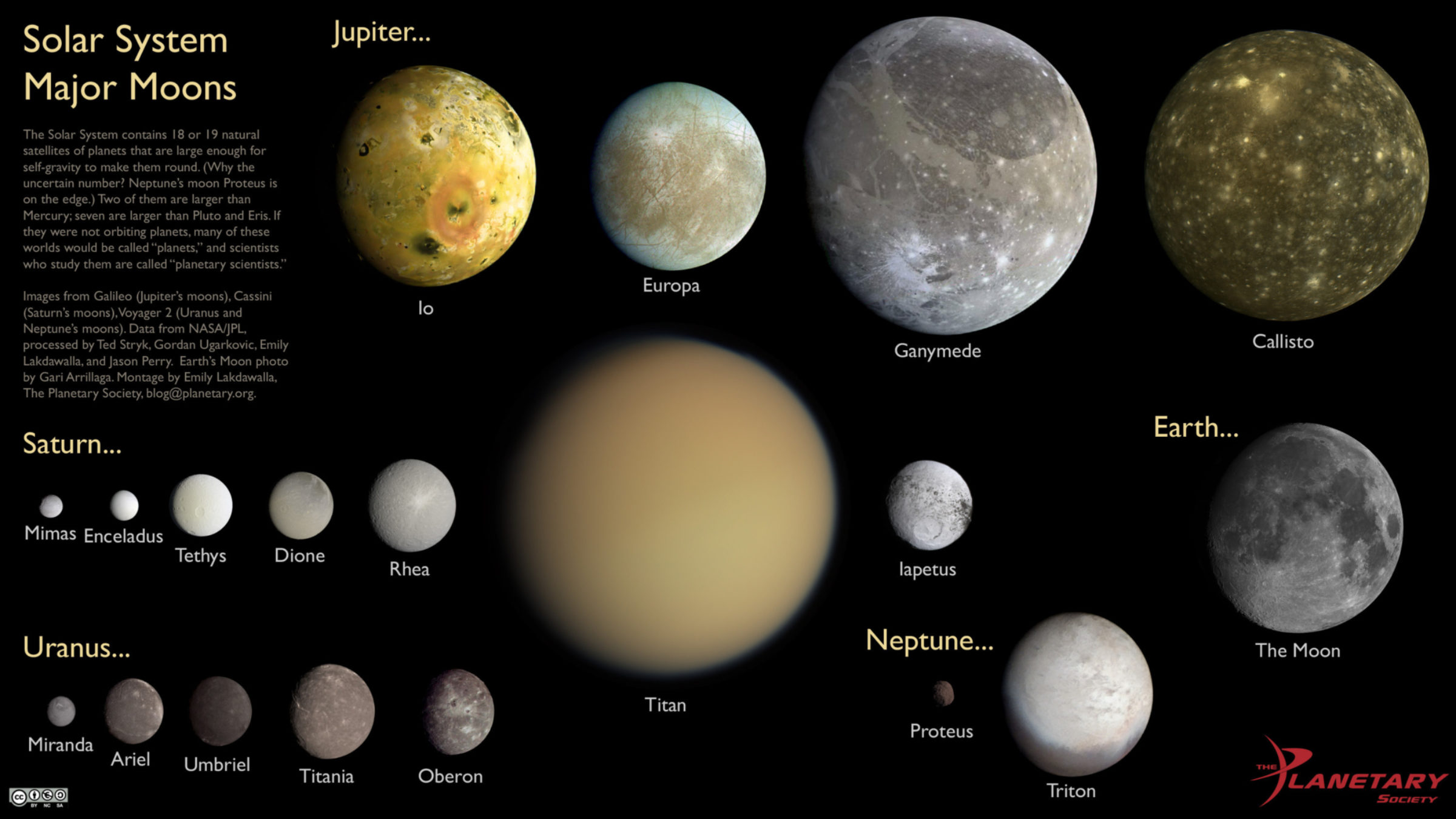

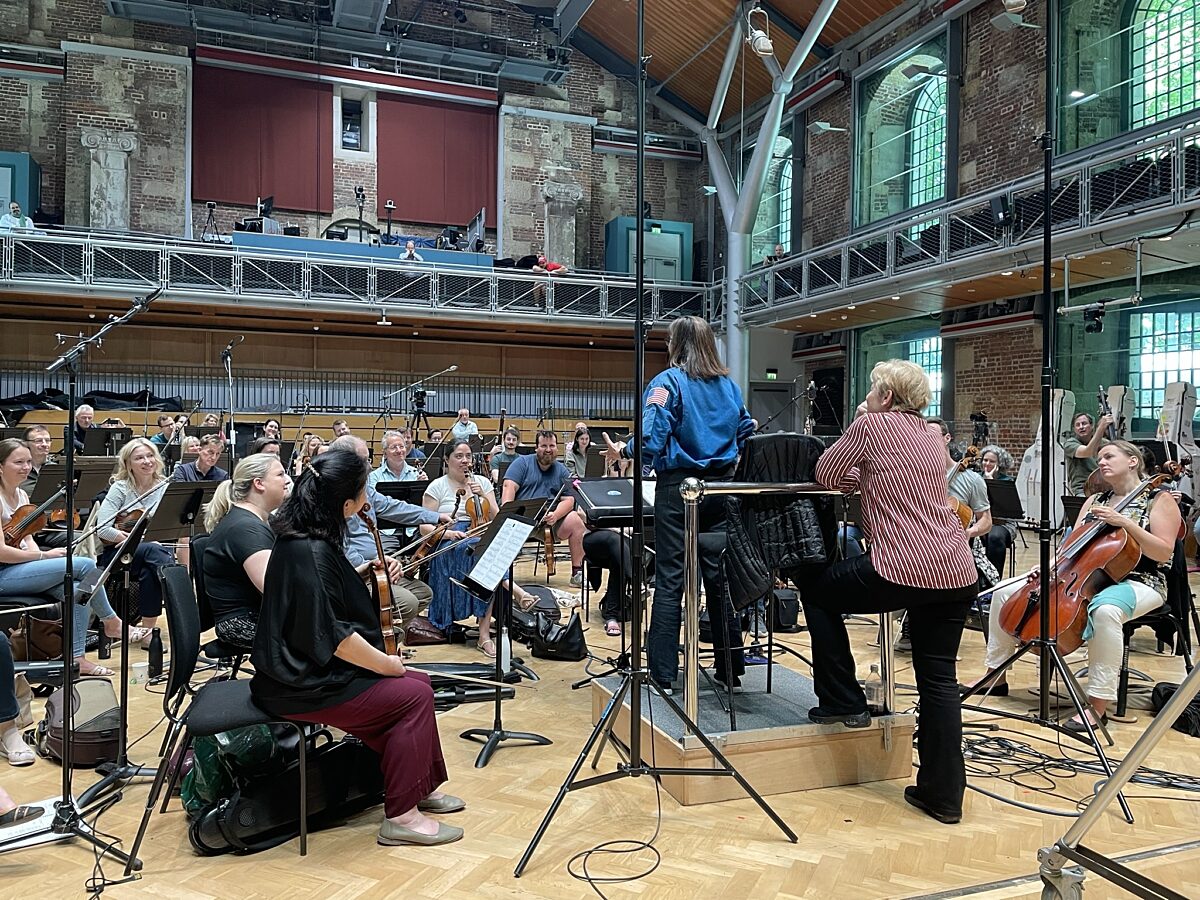
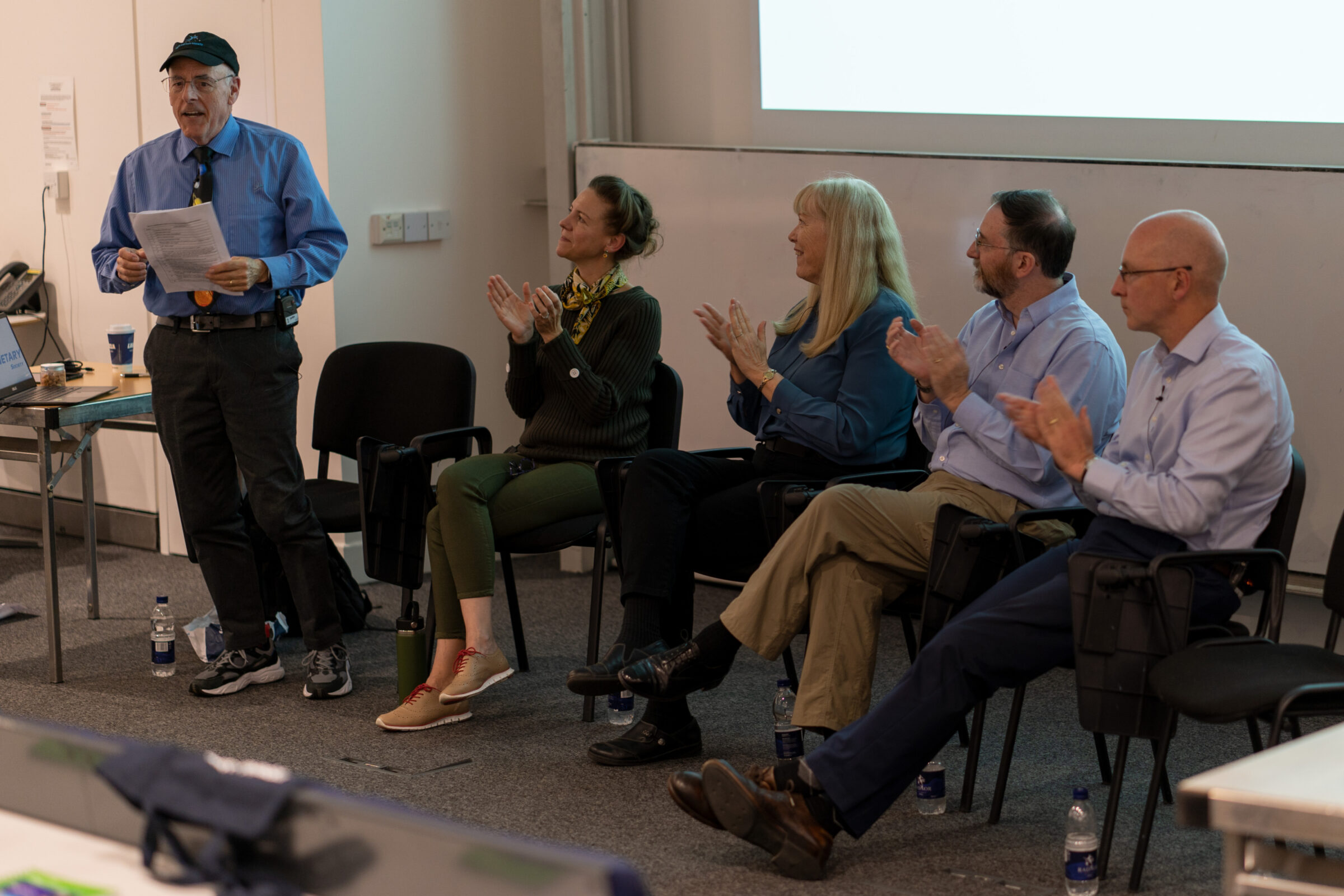
Transcript
Sarah Al-Ahmed: An Earthling's Guide to The Moons Symphony, this week on Planetary Radio. I'm Sarah Al-Ahmed of The Planetary Society with more of the human adventure across our Solar System and beyond. For the past few years, Planetary Radio has been following the story of Amanda Lee Falkenberg, the composer of The Moons Symphony. This week we're going to take a trip with Mat Kaplan, our senior communications advisor to the Ravinia Festival, where composers, astronauts, and scientists share the discoveries that inspired the seven beautiful movements of The Moons Symphony. Then we'll hear from Bruce Betts, our chief scientist for What's Up as we share one last Olympic-themed random space fact. Also, last week I mentioned an upcoming show about bugs and space food. I've been a little under the weather this past week, so we're going to be hearing from Team Insecta in our next show instead. If you love Planetary Radio and want to stay informed about the latest space discoveries, make sure you hit that subscribe button on your favorite podcasting platform. By subscribing, you'll never miss an episode filled with new and awe-inspiring ways to know the cosmos and our place within it. If you've been listening to Planetary Radio for a few years, you'll remember former host Mat Kaplan's, coverage of The Moons Symphony. It's a spectacular composition by Amanda Lee Falkenberg that beautifully interprets seven moons in our Solar System into seven movements. That actually got to be there two years ago with scientists and astronaut Nicole Stott when the work was recorded by the London Symphony Orchestra. And last month he got to go to the famed, Ravinia Festival north of Chicago, Illinois, USA. An abbreviated version of the symphony, received its first public premiere at Ravinia's huge outdoor amphitheater. Two days before the performance, Mat gathered another group of outstanding planetary scientists along with Ravinia Festival conductor Marin Alsop, composer Amanda Lee Falkenberg, and Nicole Stott, who painted with watercolors while living on the International Space Station. This presentation was part of the Breaking Barriers Festival, which was kind of a festival within the festival that celebrated the expanding roles of women in music and science. In this edited version of Mat's Panel, you'll hear from a lot of amazing people, including world-traveled volcanologist and principal scientist, Ashley Davies at NASA's Jet Propulsion Lab. He's part of the Europa Clipper mission. You'll also hear from Elizabeth or Zibi Turtle at the Johns Hopkins Applied Physics Lab where she's the principal investigator of the Dragonfly mission to Titan one of my personal favorites. Then there's Royal Society Research Professor of Physics, Michelle Dougherty at the Imperial College London, who discovered the water plumes that are emanating out of Saturn's moon, Enceladus. And lastly, you'll hear from Tom Spilker, spaceflight architect and veteran of missions, including Voyager, Cassini, Genesis, and Rosetta. Tom is now also vice president at Above Space Development Corporation.
Mat Kaplan: Welcome to an Earthlings Guide to the Moons Symphony. We're very glad you're here. Thank you for joining us. I am Mat Kaplan, the senior communications advisor for The Planetary Society coming to you from the Center for Interdisciplinary Exploration and Research in Astrophysics, better known as CIERA, part of Northwestern University, and of course the Breaking Barriers Festival part of this summer's Ravinia Festival. Yes. And we'll be hearing much more about that as well. I knew we would want to get right into the music. So here is a short excerpt from the movement, Io. And then we'll come back and talk more about the music and the moon.
Music: (singing)
Mat Kaplan: Pretty rousing stuff and with good reason because there really is no other world at least in our Solar System, anything like Io is there, Ashley?
Ashley Davies: No, there isn't. It's a wonder of the Solar System. It's the most called mechanically active body in the Solar System that we know of. I've trampled the world north to south looking at volcanoes so that I can understand the processes here so I can better understand what's happening out there. And in reverse I'm looking at what's happening on Io and other bodies in the Solar System to help us better understand what's happened in Earth's past. My true love in terms of science is Io. I've been studying it for most of my career. It's an incredible world.
Mat Kaplan: I've often said that the worst job in planetary science is to be a cartographer for Io because it's constantly changing. Right?
Ashley Davies: Actually not as much as you might think.
Mat Kaplan: Oh, never mind.
Ashley Davies: Okay. We've seen a lot of changes on Io, but paradoxically over as time goes by, Io seems to revert back to the way it was back when [inaudible 00:07:39] just saw it. A lot is happening on the surface. We are constantly seeing new sources of volcanic activity and accountable volcanic centers is now up to 343 active volcanoes.
Mat Kaplan: And you can tell us about this instrument?
Ashley Davies: Yes, MISE is the Mapping Imaging Spectrometer for Europa. It's been mounted on this, the Europa Clipper spacecraft, which is currently in Florida being put on one of these, which is a SpaceX Falcon Heavy. And in October it's going to be launched towards this place, Europa the ice-covered jewel of the outer Solar System. It's very exciting.
Mat Kaplan: Yeah. Some of you may have heard there were some questions, some things that were discovered about some of the components on Europa Clipper that there has been some concern regarding, but it is already in Florida. What's the current status?
Ashley Davies: The current status is the problem is being evaluated very carefully, but the project is moving steadily towards a launch in October. We're all very excited about it.
Mat Kaplan: And fingers crossed.
Ashley Davies: Absolutely.
Mat Kaplan: Okay. Amanda, you, I think, did a pretty good job capturing this wild world. Tell us about why orbital resonance, which is also something mentioned in the lyrics is so important.
Amanda Lee Falkenberg: Well, this is the new Gobbledygook zone. This is why they're able to find new worlds that could sustain life because now as Ashley described to me, they've recognized that because it's orbital resonance, it's what is driving the dynamics of these worlds. It's not solar driven, like Earth-centric Earth. And so this all came about through the Voyager mission, which we'll hear more about later. The interesting thing is in my research, one of the most surprising things that came out of the Voyager mission was the discovery of volcanic activity on Io. And the second thing was the ocean of Europa. I only read this after I'd positioned these moons in the sequence that they're on the symphony, but I thought that was quite interesting. But this particular orbital resonance is these numbers are really important. Ganymede takes four, I hope I got this right now.
Ashley Davies: [inaudible 00:09:47]
Amanda Lee Falkenberg: Yes, exactly.
Ashley Davies: For every orbit Ganymede makes, the Europa makes two orbits.
Amanda Lee Falkenberg: There we go.
Ashley Davies: And Io makes four orbits.
Amanda Lee Falkenberg: Four orbits. So Io is the most actively rotating moon around Jupiter, and it's because of the tugging, the pulling. This is why in the lyrics, the tug of war was coming through and that's driving this activity on Io and that's what's responsible for this dynamic world. And so I thought that that actual number does actually appear in the score, and I haven't actually shared that with Marin yet, but I thought I was going to wait for tonight.
Marin Alsop: No pressure.
Amanda Lee Falkenberg: No pressure.
Mat Kaplan: So talk about your music of the spheres, which is there it is right there in the score. I'm going to continue on as we go on to talking about another world that we hope to visit before too long. And that is why Zibi Turtle is here in large part. This is one of the most audacious and frankly exciting missions in the history of planetary science. We're not there yet. So how are we doing, Zibi? How close are we getting to sending that drone, that octocopter to this mysterious moon, Titan?
Elizabeth Turtle: The team has been making excellent progress. Dragonfly was officially confirmed by NASA this past April. That's a big milestone on our way to Titan, to getting back to Titan to explore it. We have successfully passed our preliminary design review, and now we are actually coming into the phase C, the final design phase, and coming up on our critical design review just under a year from now. So the team has been working incredibly hard over the past several years to keep Dragonfly moving toward getting back to Titan. We're scheduled to launch in July 2028. As with everything in the outer Solar System, it's a long way away. Dragonfly will get to Titan in 2034.
Mat Kaplan: You play the long game when you're in planetary science, sending these robotic explorers across the Solar System until we get much, much bigger rockets or ones that can stay on a lot longer.
Elizabeth Turtle: We are really lucky in our Solar System. We have wealth of worlds in the outer Solar System. All of these moons that Amanda has represented so beautifully in her incredible work, the diversity of these worlds. You couldn't ask for a better set of destinations to explore. Titan is the only one of these moons that has an atmosphere. The atmosphere is actually denser than Earth's atmosphere. The atmospheric pressure at the surface of Titan, it's about one and a half times the atmospheric pressure here on Earth and the gravity is lower. So the atmosphere does a lot of different things for us from the perspective of exploration. And one is that it's actually physically easier to fly on Titan than it is here on Earth. A person could soar over the surface of Titan, which would be a really spectacular way to explore it. But we're going to send our robotic emissary first. And the reason we're doing that is that Titan's atmosphere has a nitrogen like our atmosphere, and then a little bit of methane. Methane breaks down and it recombines to form these very complex carbon-rich molecules. And that's what forms the haze in Titan's atmosphere. These molecules fall out onto the surface, and Titan is an icy world, like most of the worlds in the outer Solar System. So at places where its surface is melted, now you've had the opportunity for liquid water and complex carbon-rich material to mix, and those are the ingredients for life as we know it, and that's what we want to explore.
Mat Kaplan: Amanda, talk about how this world led to your creation of this movement.
Amanda Lee Falkenberg: This one really fired up my imagination. The exit I'm going to play tonight is from the middle part of the movement. But what people are going to hear on Friday night is the opening, which is where as Zibi just described the whole concept of these two little space probes. The Huygens hitching arrived with Cassini spacecraft and then for seven years they were together. And then his big moment, his big assignment arrived 2004, and they were separated because his grand assignment was to descend through this extended atmosphere at Titan. And I got really quite sad about this. I'm like, "Gosh, this beautiful friendship, they've got to say goodbye." So when you hear this opening music, it sounds very mournful. And I even chose the Italian word, lacrimosa which means tearfully. And so I was playing into the drama of that. And then actually there was a special moment today in the rehearsal. Zibi was actually sitting next to me and I had the score in front of me, and there's this big flute rip at the moment that he flies through. He's parachuting through the atmosphere, and I turned to Zibi and I'm like, "This is where he makes his first atmospheric plunge right here." And there's all this dribble of notes coming down. And so I was really playing to the theatre of this incredible spacecraft that are doing these cool things. But this particular excerpt, I think it'll speak for itself and it just lends itself to the whole concept of this Earthly world-like site, these familiar sites. It was astonishing, not because it was something new, it was eerily the same as Earth, but different chemical structures. And that's what we're going to hear right now.
Mat Kaplan: So here is a portion of Titan under the direction of Marin Alsop performed by the London Symphony Orchestra.
Music: (singing)
Mat Kaplan: So Titan, let's move on to this world Enceladus and we'll talk about why we're so glad to have Michelle with us as well. But do you want to say something first about this little moon?
Amanda Lee Falkenberg: Oh, this again, really fired up my imagination. The whole reason why we here today is because of Bob Pappalardo who then introduced my project to Dr. Linda Spilker. And I had the pleasure of meeting her and she invited me to NASA. Basically that was the first time I learnt about the phenomenal discovery of the geysers at Enceladus. She sat me down and she told me the whole sequence of events and she started by saying, "It's basically this moment in the mission marked the moment of a great detective story." And it's because of this woman here in the middle that we're about to learn about. And it was her instrument, the magnetometer that detected very strange activity at this world. And basically, what Michelle did when she discovered this strange data, she really put her career on the line as... And the whole unfolding events just sounded like a Hollywood film to me. I'm just like, "This belongs in a feature film." And so a lot of the music that you'll hear for this particular moon really sounds like a soundtrack to Michelle's incredible courage and bravery to fly. She'll tell the story, but it's just... I was like gobsmacked. I'm like, "This has to go into the symphony." So that's very feature filmy kind of approach for this because of the story you're about to hear.
Mat Kaplan: So it's not a big moon, is it Michelle? I mean, weren't a lot of people surprised to see that it's such a dynamic place?
Michele Dougherty: It's really interesting. Before we got there, we knew it was interesting. We knew that Enceladus was interesting because if you have a look at the surface, it looks very young. There're not many craters on it. You can compare the surface of Enceladus to that of Mimas and Tethys that orbit quite close by. And they're covered with lots of craters. And so Enceladus looked young, and we didn't know why. The Voyager spacecraft had flown past Enceladus back in the late '70s. And one of the remote sensing instruments had observed that the surface was made up mainly of water ice. The E ring, a very diffuse ring around Saturn within which Enceladus is the center is made up of water ice as well. So people thought those two were somehow linked, but they didn't quite know how. And then we saw some data. And in the magnetometer data we saw something rather strange, weren't quite sure what we were seeing. But the fact we saw it on two flybys, one after another seemed to imply it was there. And one way in which we could describe that data was if Enceladus was covered with an atmosphere just like we have on the Earth. And what happens is the upper regions of the atmosphere become ionized and they stop the magnetic field of Saturn penetrating down onto the surface of the moon. I wasn't quite sure if we were seeing something real because we weren't sure if our instrument was calibrated properly because it was still early days, but the fact we'd seen it on two subsequent orbits a month apart, I thought it was worth taking a chance. So what I did is I went out to the Jet Propulsion Lab. We had a science meeting planned, I think, Zibi, around about that time. And I was going to try and persuade the Cassini project to take us much closer on a third flyby, which was about four months later. I was a little bit nervous about this because I wasn't sure we were seeing something real. I remember I was standing in the line at Starbucks. I was jet lagged. As you know, I get jet-lagged quite easily. And I was standing in the line waiting to get a cup of coffee. And the man in front of me, Jerry Jones, was responsible for the safety of the spacecraft and essentially driving the spacecraft. And he turned around to me and said, "Michelle, what are you doing here?" And I said, "Oh..." I told him what we'd seen and I said, "I'm going to try and persuade everyone that we should go really close." He rubbed his hands together in glee and he said, "I've always wanted to go closer to a planetary body than anyone else." And so I knew I had one vote in my back pocket before I went into the meeting. It took a little bit of persuasion. Zibi, I think you were there. There was a lot of interest in us going close, but the six years it took us to get to Saturn, we had planned every single second of the observations we were going to make when we got there. And so that meant if we changed the flyby altitude, not only were we going to use some fuel, which we might need at the end of the mission, but some of the instruments weren't going to take the data that they were planning to take. But clearly, I was persuasive and the Cassini project agreed that we would go much closer on the third flyby. So the plan was in July of 2005, we would fly below the South Pole. That was rather fortuitous that we were going to do that, but the flyby altitude was going to be 173 kilometers. And the reason it was so important, we flew below the South Pole, it wasn't an atmosphere covering the entire surface. It was a plume of water vapor emanating from the South Pole. It was coming from cracks on the surface, and the imaging instrument was able to see these very deep cracks at the surface, which they called tiger stripes. The data below comes from an instrument that was almost able to taste what was in the plume, and it found water vapor, it found methane, it found carbon dioxide, and carbon monoxide. But critically it found organic material. And so that meant at Enceladus we had three of the ingredients we need for life to form. We had a heat source, we had liquid water underneath the surface, we had organic material. The only thing we weren't sure about is whether those first three ingredients were stable enough over a long enough period of time that something could actually happen. But it was after this that the focus of the Cassini mission, not only was it on Titan of course, but we had many more flybys of Enceladus and the extended mission, and I think it also allowed us to persuade the European Space Agency that we should go back to Jupiter.
Mat Kaplan: So the wonderful thing about this, of course, is water, water everywhere. And we want to find out if anything is drinking it. And because we are finding these worlds with oceans. In fact, I should have brought the slide of Europa that shows what we think is the amount of water under the ice on Europa compared to the total amount of water on Earth. Europa has more water or so we believe. Amanda, before we hear this movement, anything you'd like to add?
Amanda Lee Falkenberg: Yes. There's a lot, but I'll try and keep it very short. There is a moment that we'll be hearing, and it's called the jaw-dropping chord, which Marin conducts beautifully, and it's where I have a sea extension on double bass. As I composed the music for this story and just watching my research on YouTube and speaking to Linda and interacting with these scientists, the moment that they discovered these incredible geysers is from the South Pole that actually solved the E-ring. And I just thought to myself... Again, back to the Hollywood drama. Imagine that moment that they actually got the images back after all this investigation and seeing the efforts of this magnetometer. This is blind kind of faith with data. When they did see these geysers, I just thought their jaws must have been dropping. So I call it my jaw-dropping chord and it's in this little excerpt and we all heard it today, but I didn't point it out because we're trying to be behaved. But you'll feel it, I think, at the moment, and then you'll just think, "Oh, can you just imagine just speechless seeing water in the outer Solar System?"
Music: (singing)
Sarah Al-Ahmed: We will be right back after the short break.
Bruce Betts: The Planetary Society is strongly committed to defending our planet from an asteroid or comet impact. Thanks to the support from our members, we've become a respected independent expert on the asteroid threat. So when you support us, you support planetary defense. We help observers find, track, and characterize near-Earth asteroids. We support the development of asteroid mitigation technology and we collaborate with the space community and decision makers to develop international response strategies. It's a lot to do and your support is critical to power all this work. That's why we're asking for your help as a planetary defender. When you make a gift today, your contribution will be matched up to $25,000 thanks to a generous member who also cares about protecting our planet. Together, we're advancing the global endeavor to protect the Earth from asteroid impact. Imagine the ability to prevent a large-scale natural disaster. We can if we try. Visit planetary.org./defendearth to make your gift today. Thank you.
Mat Kaplan: Marin, we got to see you at work there, and I'm not sure how obvious it was, but we did get a little bit of a taste in that the orchestra recording session was separate from the choir recording session. And I just wondered, did that present any special challenges?
Marin Alsop: We were just coming out of COVID and so we couldn't have that many people in the same space, so we had to separate things out, but I don't think you can tell when you listen to the recording at all that it was done separately.
Mat Kaplan: We're going to move on. Poor Miranda. There's a moon of Uranus by the way. You have to feel bad for these worlds that both the planets, they circle Uranus and Neptune and the worlds themselves because we have visited them, we've had a tourist from Earth visit them only once many years ago, and that of course was the Voyager mission. One of many that Tom Spilker has been a part of. Tom, where were you during this? There's a moon of Uranus, by the way.
Thomas Spilker: I was manning the radio science operations desk, a bunch of computer displays in front of me as these images were coming down. Now, I had been there several times before for images of other moons, including Saturn images coming down and you hear the geologists on the net saying, "Okay, yeah, here's a crater saturated surface. It looks like there's a linear feature there. That's probably a fault, and here it's cutting a crater." So it post-dates the crater and it just goes on and on and on and on. This image comes in and the net is silent. And it's that silence that says, "Excuse me, what the hell is that?" You look over on the left side and you see that crater-saturated terrain that says, "This is very old. It's been around for a long time." And what was expected was what you see on the left side there, a very old icy surface that's been bombarded for eons and is a crater-saturated. The ice has been covered with meteoric material coming in that's dark, so it's not quite as bright white as Enceladus is. This is a little bit smaller than Enceladus, but it's close to the same size, but there's a lot of this meteoric material on the surface and you get that terrain that they were expecting. And then you get over to the other half of it, and this is pretty much exactly what we knew wasn't going to be there. There are multiple theories for what's going on here and we have not settled onto a theory that explains everything that we see here. This is one of the things that we see in the outer Solar System that we really weren't expecting, and that is the outer Solar system is dynamic. It's still doing things. There are processes going on that are modifying the moons modifying surfaces, modifying interiors, modifying the chemistry. All kinds of things going on there that 40 years ago, 50 years ago, people would've said, "Ah, it's all frozen wasteland." No, it's not.
Mat Kaplan: Do you know? I think I read that because the Voyager spacecraft and only one of them went to Uranus and Neptune, didn't have much time and was very busy at both the worlds. I think everything of Miranda was captured in about 17 minutes.
Thomas Spilker: Yes, yes. We saw enough with Voyager that we need to go back. Cassini went back to Saturn because of all of the things that Voyager found that said, "We need to come back here because there's a lot more to learn here." Same thing happened at Uranus. Same thing happened at Neptune. It may take us a while to do it, but Voyager has told us we need to go back to all these worlds.
Mat Kaplan: Back to you, Amanda, and this little moon, which is one of the seven that you decided to focus on.
Amanda Lee Falkenberg: So this was the most dramatic experience in... Well, that and Earth Moon, but this moon is responsible for the seventh movement. I'll start by that. Just teeming with so much drama. And as I began composing her music, this weird sensation crept over me as something didn't feel right, and I'd only settled on six moons at that point. They were all of the science moons and I had shortlisted and I started composing her music and for two weeks I just couldn't put my finger on it. Something didn't feel right. All of a sudden when I was composing her music and creating this dramatic landscape for her that obviously she deserves, I all of a sudden went... I felt like I'd woken up from a bad dream. And I went, "Oh my goodness. I know what's missing in my symphony. I felt like I'd been back to planet Earth and I'd looked up and I saw our moon." I thought, "Oh my goodness, there's the seventh movement right there." And it's only because of that experience in her dramatic world that led me to the realization that what we have on our Planet Earth is teaming with life. It's safe here. This is an incredible opportunity for us Earthlings and life formed to develop here. And so it was an incredible experience and I remember sharing it with Nicole, my interactions and emotional reaction to this, and she basically said, "Amanda, you've had your Earth rise." She does have a majestic monument to her name, which is a giant ice cliff, which is the tallest in the Solar System. So it's like a shrine of survival or something, and it comes through in the lyrics. She's a feisty one. She's survived, and we have music to serenade her story.
Music: (singing)
Mat Kaplan: Tom?
Thomas Spilker: Amanda mentioned the cliff, the small size of Miranda. Its gravity is only about 1/100 of what we have here on Earth, and the cliff is so tall. If you jumped off the top, you'd have time to read a good chunk of a newspaper before you hit the bottom.
Mat Kaplan: I was just reminded when I heard the cymbals crash there, Marin, how exciting it was to sit on that high balcony in the London Symphony Orchestra's rehearsal space, listening to the recording underway and the work that went into this. And of course, you're not hearing all the takes that took place as different sections were repeated. Recording is quite different from performing in front of an audience, isn't it?
Marin Alsop: It was very intense, wasn't it? They were all like... No, but it was nice to have so many of these incredibly gifted people around to appreciate Amanda's fantastic rendition and rendering of, I think, what they experienced day in, day out. It takes it to a different space, a different level when you can admire the artistic aspects, I think of the world around us makes it appreciate being part of this world. And that's what this is all about this week. And the recording process with the London Symphony, it's very intense. They're a fantastic orchestra and they record everything, all the big film scores and everything. And so I think they do Star Wars after they do our stuff. And so they're very focused and very intense, but it's not about finding the arc of the entire piece and bringing it to life for an audience, it's about really going section by section and getting the tempo right. It was good. I had a lot of monitors and they kept me on track. But Friday, I don't have any monitors, so you're not going to be able to stand up. So it's all mine.
Mat Kaplan: By the way, Paul in the back there, partner and husband of Amanda, definitely a partner.
Marin Alsop: Wonderful musician in his own right.
Mat Kaplan: We're going to keep going by bringing it back home to our own moon, the one that we all stare up at on those nights when we can see it. But before that, even the world that my boss, the science guy says is his favorite world because everybody he knows lives there, and that of course is Earth. You're looking down on it there past the woman in the cupola on the International Space Station. Nicole, I cannot tell you every time I see photos like this, it burns inside me my envy.
Nicole Stott: I do highly recommend it. Right there, that is the favorite place of astronauts on the International Space Station, and I think it's because it absolutely brings you back to Earth, which is what I love about the seven movements. Not just the seventh movement, but the seven movements of the symphony. I think that's what we're doing as we're exploring the outer Solar System. We're always trying to figure out that connection back to Earth. The same thing is happening with astronauts in space. Even if you're orbiting it 250, 300 miles above the planet or our friends who are on the moon and those that'll be going back, there's this connection you just want to maintain and be a part of. And it's a big part of the experience. I like to think about it like putting the human in human spaceflight, which even in all of these, the science of all this, every single one of you said it in one way. We're going off to these places to understand what happened there and what's going on there, what might happen there in the future, but everything about it is helping us better understand what has, is or will happen here on Earth. I love that, that reminds us of the human connection in it, and I think that's what comes so beautifully together with this final seventh movement bringing us back to Earth, is that human and human spaceflight.
Mat Kaplan: We've talked mostly tonight about that Venn diagram with a big overlap between music and science, space science, but you're a visual artist in large part.
Nicole Stott: I am. And I was really fortunate to have somebody on Earth before I left on my first flight to remind me that I was going to be there, not just working, but I was going to be living in space for months and that I should consider bringing something with me that I enjoy doing on Earth, had to be small and had to be non-toxic and all of these kinds of things. I liked watercolor painting. I chose watercolors. I painted this little chain of islands on the northern coast of Venezuela, and I love it. It is absolutely one of the personal highlights of the flight for me. It goes back again to that human and human spaceflight. What I love about this, this blend of the science and the music and the art, and the music, and it reminds us and all of this, everything I've heard. Marin, even the way you're talking about how the rehearsal goes, not just the craftsmanship of that, but the technical kind of precision and all of it. It's this use of our whole brains to bring to life the most beautiful, symphonic creations, but also to allow us to do spacewalks and to allow us to explore the outer Solar System. I mean, I think every single one of these people is not just cutting off half of their brain to do that. They're thinking creatively about things. And pretty much every astronaut I know has some creative outlet, even if they're not out there publicly expressing us. It's really cool, and I cannot wait to see what people bring with them or take with them or create on future missions too.
Mat Kaplan: But onto our moon. There it is in all its glory, the full moon.
Nicole Stott: The whole score of The Moons Symphony is now on the moon as well. So I'm going to get goosebumps with that. It's very cool. So leading the way with the music on the moon.
Mat Kaplan: There's a little piece of that score over, superimposed over what many people believe is the best known, most popular photograph of all time ever, and that is Earthrise from Apollo 8. Talk to us about this, Amanda.
Amanda Lee Falkenberg: My intention with the seventh movement is to have everyone experience Earthrise without having to leave Earth's orbit and do those crazy hand wave things with one hand. And so that through the power of music, we want to transport every Earthling to experience the power of this impression of our beautiful home united and whole and all that we love is on there. And really, the music takes over where words cannot explain what these astronauts are trying to communicate to us. And that was my mission, to find the power of music, to be that voice for all of us, to then have and appreciate what these guys have experienced. And that's the Seventh Movement.
Mat Kaplan: And I'm with you. I mean, I love all seven movements. This is my favorite.
Music: (singing)
Mat Kaplan: I want to thank the CIERA staff here at Northwestern University, and I am sure I'll give you one more chance here that you also want to thank all of our panelists. I thank you for the work that you do, for the inspiration you provide, and to Amanda for creating the music that has brought us all together tonight.
Sarah Al-Ahmed: It's been a few years since I first listened to The Moons Symphony, but it still makes me emotional every time I listen to it. I really recommend checking it out. I'll leave links to the previous Planetary Radio shows with Amanda Lee Falkenberg in the show notes for this episode of Planetary Radio in case you want to learn more. And now it's time for What's Up with Dr. Bruce Betts, our chief scientist here at The planetary Society. Hey, Bruce.
Bruce Betts: Hi.
Sarah Al-Ahmed: So last week we talked about the hunt for Planet 9 on Planetary Radio, and we got more comments than usual about this one. I think everyone's really excited about the concept of Planet 9, and for people who are unaware, we think there may be another planet out beyond Neptune given the evidence, but we haven't found it yet, is the context. But I mean, that's an exciting story.
Bruce Betts: Which is a funny story. Planet 9, it might be there. Oh, where is it? We don't know.
Sarah Al-Ahmed: We don't know. Not yet.
Bruce Betts: Have you seen it? What's it look like? No, we don't know.
Sarah Al-Ahmed: How cool is that going to be though if we find it? I don't know. I mean, it's not like we're going to get good images of it, considering how far away it probably is, but maybe one day long in the future, we'll actually send a probe out there.
Bruce Betts: It's very cool. And of course, we also discussed on last week how Neptune was found with calculations telling the observers where to look, and this is a much more complex, challenging version of that.
Sarah Al-Ahmed: We did get one correction that came in from David Frankis from the UK who noted on a small historical point, Bruce Betts said that Caroline Herschel was William's wife. She was in fact his sister.
Bruce Betts: Yeah, good call. Thank you.
Sarah Al-Ahmed: Sorry, Caroline.
Bruce Betts: Sorry.
Sarah Al-Ahmed: I did get one interesting question from one of my good friends, Bill Grueneberg, who I worked previously with at Griffith Observatory, and he pointed out some interesting things about the International Astronomical Union's definition about planets that I think a lot of people probably wonder about given the context of Pluto being reclassified as a dwarf planet. I brought this up with Mike Brown in the conversation. I asked him, "Why can we classify Planet 9 as a planet if we haven't found it yet? What is it about what we know about it that will allow us to call it a planet based on the IAU definition?" And there's three things that make something a planet. It has to orbit the sun. So right out the gate, that doesn't include exoplanets. That's on purpose. Two, a planet has to be big enough to achieve hydrostatic equilibrium, which basically means it's roundish, right? You can clearly see the difference between a potato, moon and a round moon. But the last one is the one that confuses people, right? Because-
Bruce Betts: Oh, yeah
Sarah Al-Ahmed: ... the common way that people express it is that a planet has to clear out its orbit, but what does that even mean?
Bruce Betts: I think it has nothing of similar size hanging out by its orbit, in its orbit, near its orbit. And so Pluto has got Kuiper Belt objects out there, Plutoids, things that if it were a big old planet, the gravity would've eventually over time gotten rid of that stuff.
Sarah Al-Ahmed: Would we be able to call this Planet 9 a planet because we see that it's flinging things out of its path?
Bruce Betts: If we do, then yeah, I would think so.
Sarah Al-Ahmed: Right? Because that's the evidence we have for it, right? It's just the weird orbits of these trans-Neptunian objects.
Bruce Betts: Right. It's having an influence just like Neptune was inferred to have an influence on object, on Uranus for that Mater. But yeah, it's flinging. I would think so but it's got to have a significant mass. It has to be a decent sized object, but I don't know. Let's debate that one once we find it in the end.
Sarah Al-Ahmed: All right. So this was also the last week of the Olympics, right? We just passed the closing ceremony.
Bruce Betts: Yes. Yes, we did. And so of course we have a random, random space fact about the Olympics, about the Olympics. Olympics, Olympics. So Haumea, there's a weird one. Haumea is one of our dwarf planets, spins around in roughly four hours, so much so that it is shaped like a rugby ball. Rugby sevens sport in the Olympics, but shaped like a rugby ball. And yet it's in hydrostatic equilibrium. It's the one thing that's dwarf planet that looks a little different because it's spinning around. If Haumea was the size of... What do you think? How about a rugby ball?
Sarah Al-Ahmed: Perfect.
Bruce Betts: If Haumea were the size of a rugby ball, then it's two moons, Namaka and Hi'iaka would be about the size of table tennis balls, ping pong balls.
Sarah Al-Ahmed: Bigger than I expected, honestly. That's cool.
Bruce Betts: Yeah, rugby.
Sarah Al-Ahmed: Have you been to see a rugby game before?
Bruce Betts: No, I have not. Have you?
Sarah Al-Ahmed: I got to see one in Australia once. Not to dunk on American football. I'm just saying man, rugby. That was good.
Bruce Betts: I have so many thoughts. Did you see rugby sevens or you probably saw regular rugby there?
Sarah Al-Ahmed: Yeah, regular
Bruce Betts: Team players. I really enjoyed the sevens because it was speedy. All right, that's what I got. So everybody go out there, look up the night sky and think about what is the weirdest sport that you saw in the Olympics and what sports did you enjoy the most? Thank you and good night.
Sarah Al-Ahmed: We've reached the end of this week's episode of Planetary Radio, but we'll be back next week with Team Insecta. Love the show? You can get Planetary Radio T-shirts at planetary.org/shop along with lots of other cool spacey merchandise. You can also send us your space lots questions and poetry at our email at [email protected]. Or if you're a Planetary Society member, leave a comment in the Planetary Radio space in our member community app. Planetary Radio is produced by The Planetary Society in Pasadena, California and is made possible by our members who love moons and music alike. You can join us and help us enable more exploration of the moons of our Solar System at planetary.org/join. Mark Hilverda and Rae Paoletta are our associate producers. Andrew Lucas is our audio editor. Josh Doyle composed our theme, which is arranged and performed by Pieter Schlosser. And until next week, ad astra.


 Explore Worlds
Explore Worlds Find Life
Find Life Defend Earth
Defend Earth


